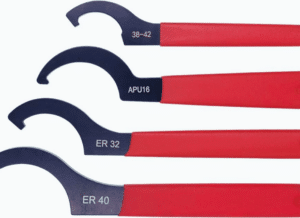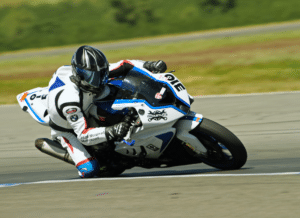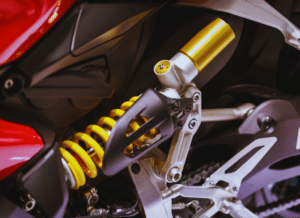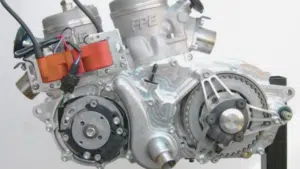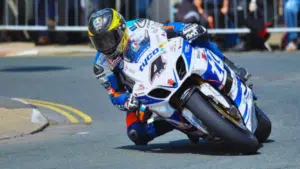Motorcycle racing suspension tuning is the process of adjusting the motorcycle’s suspension to achieve the best possible performance for the given rider, track, and conditions. The goal of suspension tuning is to provide the rider with a stable and comfortable platform to ride on, while also allowing the motorcycle to absorb bumps and imperfections in the track without losing traction.
Suspension Adjustment Tools
There are a number of different tools that can be used to adjust motorcycle racing suspension. The most common tools include:
- Front fork adjusters: These adjusters allow you to change the preload, compression damping, and rebound damping of the front forks.
- Rear shock adjusters: These adjusters allow you to change the preload, compression damping, and rebound damping of the rear shock.
- Swingarm height adjusters: These adjusters allow you to change the ride height of the motorcycle.
- Handlebar height adjusters: These adjusters allow you to change the height of the handlebars.
- Footpeg height adjusters: These adjusters allow you to change the height of the footpegs.
Tuning for Different Racing Tracks
The best suspension settings for a motorcycle will vary depending on the track and conditions. For example, a bumpy track will require different settings than a smooth track. Similarly, a hot track will require different settings than a cold track.
To tune your suspension for a particular track, it is important to consider the following factors:
- Track surface: The type of track surface (asphalt, concrete, dirt, etc.) will affect how the suspension needs to be tuned.
- Track layout: The layout of the track (tight corners, long straights, etc.) will also affect how the suspension needs to be tuned.
- Weather conditions: The weather conditions (temperature, humidity, etc.) will also affect how the suspension needs to be tuned.
Suspension Maintenance Tips
It is important to maintain your motorcycle’s suspension properly to ensure that it is performing at its best. Here are a few tips:
- Clean and lubricate the suspension components regularly: This will help to prevent wear and tear.
- Check the tire pressure regularly: The tire pressure can affect the performance of the suspension.
- Set the sag correctly: Sag is the amount of compression that occurs in the suspension when the rider is seated on the motorcycle. It is important to set the sag correctly to ensure that the suspension is working properly.
- Have the suspension serviced by a professional regularly: A professional can inspect the suspension components for wear and tear and make any necessary adjustments.
Additional Tips
- If you are new to suspension tuning, it is a good idea to start with the base settings recommended by the motorcycle manufacturer.
- Make small adjustments to the suspension settings at a time and test the results on the track.
- Be patient and don’t be afraid to experiment. It may take some time to find the perfect suspension settings for your motorcycle, riding style, and track.
Here are some additional tips for motorcycle racing suspension tuning:
- Front fork preload: Preload is the amount of spring tension that is applied to the front forks. Increasing the preload will make the front forks stiffer while decreasing the preload will make them softer.
- Front fork compression damping: Compression damping controls how quickly the front forks compress. Increasing the compression damping will make the front forks stiffer while decreasing the compression damping will make them softer.
- Front fork rebound damping: Rebound damping controls how quickly the front forks rebound after being compressed. Increasing the rebound damping will make the front forks faster while decreasing the rebound damping will make them slower.
- Rear shock preload: Preload is the amount of spring tension that is applied to the rear shock. Increasing the preload will make the rear shock stiffer while decreasing the preload will make it softer.
- Rear shock compression damping: Compression damping controls how quickly the rear shock compresses. Increasing the compression damping will make the rear shock stiffer while decreasing the compression damping will make it softer.
- Rear shock rebound damping: Rebound damping controls how quickly the rear shock rebounds after being compressed. Increasing the rebound damping will make the rear shock faster while decreasing the rebound damping will make it slower.
Conclusion
Motorcycle racing suspension tuning is a complex topic, but it is an important part of getting the most out of your motorcycle. By understanding the basics of suspension tuning and following the tips above, you can improve the performance of your motorcycle and increase your chances of success on the track.

